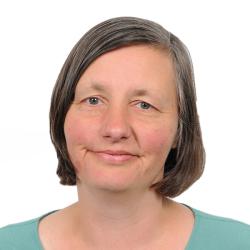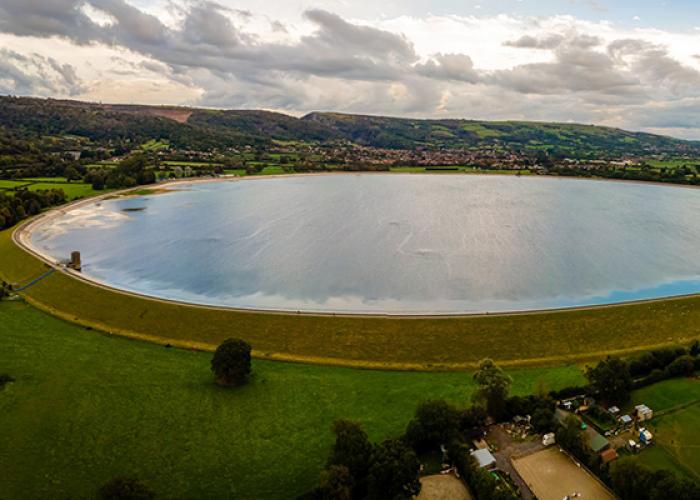Rapid study of Kakhovka Dam breach impacts will support biodiversity’s recovery
We've been working with the UK Centre for Ecology & Hydrology (UKCEH) on an unprecedented rapid assessment of the environmental impacts of the Kakhovka Dam’s breach that will support international action to restore a biodiversity hotspot.
With the area in southern Ukraine in a warzone, the team used cutting-edge technologies to carry out the first independent assessment of the impacts within weeks of the dam in southern Ukraine being breached in June.
It estimated that half a million hectares of protected freshwater and terrestrial habitats have been exposed to a range of hazards, including nutrients, pollutants from 1,000 sites and the erosion of sediment. This follows widespread flooding downstream and the near-emptying of the upstream Kakhovka Reservoir.
Environmental assessments have previously taken place only after a war, when it is safe for scientists to carry out in-depth field studies, but this has limited the scope of targeted biodiversity restoration within post-conflict recovery planning.
The Kakhovka study, commissioned by the Foreign, Commonwealth and Development Office (FCDO), combined hydrological and digital modelling with satellite imagery and a study of data on the region’s ecology. This enabled the identification of protected habitats and species likely to be impacted by the breach, setting a precedent for early action in future conflicts.
The report’s key findings were:
- Around 83,000 hectares of land, an area the size of Kyiv, was flooded downstream of the dam. The discharge of water was 30,000 m3 per second immediately after the breach, compared to a daily average of 2,600 m3/sec
- The Kakhovka Reservoir was almost completely emptied, leaving thousands of fish washed out or stranded. This included an estimated 28,000 crucian carp, totalling 95,000 tonnes with an estimated commercial value of US $108 million
- There were more than 1,000 potential sources of pollution from flooded sites, including wastewater treatment works, petrol stations, landfills and industrial sites
- The erosion of sediment following the flood might also have released historic pollutants, such as metals, stored in sediments
- The breach affected over half a million hectares of habitats of national or international importance, upstream and downstream of the dam, including the Black Sea Biosphere Reserve
- Some 28 of the 567 species affected by a range of hazards are globally threatened or worse, including the Great Bustard, Pontic Shad, Harbour porpoise, Donets ruffe, the Steppe Polecat, the European mink and the slender-billed curlew, the latter being on the verge of extinction.
Emma Brown, technical director at HR Wallingford, said: “I am very proud of the work we’ve done with UKCEH to assess the environmental impacts of the Kakhovka Dam breach. Combining our expertise in dam breach modelling, hydrology and earth observation with UKCEH’s expert biodiversity knowledge enabled the team to produce a detailed report in just 16 days, which I hope will be instrumental in helping with recovery efforts in the region."
Professor Bryan Spears of UKCEH added: “We hope that our assessment provides a baseline against which to assess biodiversity and habitat impacts and recovery related to the Kakhovka Dam breach. It is now important that the results of this and other assessments are scrutinised fully by the wider scientific community, allowing biodiversity restoration to be incorporated within post-conflict recovery planning at an early stage.”
The report, which informed a wider report by the UN Environment Programme, also identified potential long-term effects on the environment, human health and economies. It said the flooding would have worsened water infrastructure and quality, affecting drinking water supply and irrigation for agriculture
The authors also made several recommendations for future action, including an assessment of the sources of radioactive and munitions waste, and their movement down the Dnipro River to the Black Sea. This would support clean-up efforts, reduce the risks to human health associated with eating contaminated fish, shellfish and crops and safeguard a key global grain shipping route if there are unexploded arms in the area.
The scientists at UKCEH and HR Wallingford are now encouraging the international scientific community to work together to build on their initial assessment, to quantify the ecological impacts, provide monitoring programmes, and ensure open access of relevant data.
The report is available on the Zenodo website and a commentary by Professor Spears has been published in the journal Nature, Ecology & Evolution (DOI: 10.1038/s41559-024-02373-0).
Want to know more?
Further information



